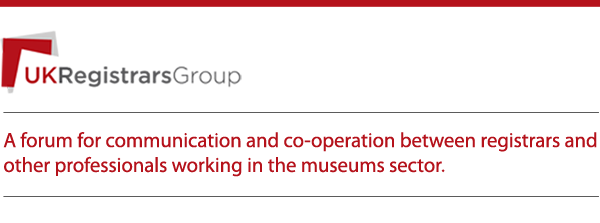Due Diligence
Professor Janet Ulph, University of Leicester
Due diligence covers both legal and ethical considerations. The museum sector is subject to its different sector guidelines to the art trade, which has ethical codes of conduct moderated by commercial concerns, so the two sectors engage in differentiated due diligence as a result. An example of ‘good’ legal provenance not being enough for museums is the stolen ‘Tiger Yung’, which was sold last year for £410,000. As the item was stolen in the 19th century, the thief’s descendent could claim good title after 6 years (not possible after the Limitation Act 1980) and was subsequently able to sell it legally. Although the object had good legal title, a museum would reject this type of item on ethical grounds.
Many European countries protect purchasers by enabling those that purchase in good faith to acquire legal title, unless it can be proven that they did not buy in good faith. This is much more difficult than the reverse – under UK law, a purchaser has to prove they did buy the item in good faith.
Museums hold a position of trust in the community that must be upheld, so this is key when undertaking due diligence for new acquisitions. The UNESCO Convention 1970 was an early provision that encouraged the museum sector and art trade around the world to create ethical codes of practices. The Collections Trust due diligence checklist is an excellent example of differentiated due diligence, where we are asked to engage with ethical considerations rather than just “box tick.”
The first money-laundering regulation was introduced in 1993 and the most recent in 2017: ‘Money Laundering, Terrorist Financing and Transfer of Funds (Information on the Payer) Regulations.’ From 2020, the 5th EU Anti-Money Laundering Directive will extend the 2017 Regulations to cover:
- Sales of art
- By traders and auction houses
- Involving transactions of 10,000 euros or more (irrespective of payment method)
Due Diligence
James Ratcliffe, Director of Recoveries & General Counsel at the Art Loss Register
The Art Loss Register (ALR) is a private company, founded in 1990, with the goal of recovering stolen and looted art. There are over 500,000 items subject to a claim on their database, including items that have been stolen, looted, are fakes or subject to civil dispute. Over 400,000 items moving through the international art market are checked against the database every year. The team regularly check catalogues for art fairs, auction houses and one off sales against their database and review provenance in detail.
Due diligence checks by The ALR usually involve two key stages; database checks and provenance checks, except for auction catalogues where only the database check is carried out. The ALR works with international organisations to recover cultural property, including Interpol, the US Department of Justice, Carbinieri, Deutsches Zentrum Kulturgurtverluste, the Antiquarian Booksellers Association and lootedart.com.
Museums regularly carry out due diligence on acquisitions, loans between museums or immunity from seizure and after a claim or issue has emerged; however carrying out checks on gifts, legacies, loans from private individuals / the art market and as part of an ongoing process are not seen as often by The ALR. As per Professor Janet Ulph’s presentation, due diligence varies across sectors; there is some presence in the art trade, however currently they are not always carried out as well as it should be.
Current high risk areas include:
- Nazi looted art, particularly decorative arts (porcelain, silver) and artists such as Klimt, Schiele and Liebermann
- Antiquities described with historic place names, e.g. “South Arabian”, “Western Asiatic” and “Bactrian”
- Ethnographic material from the colonial era.
Advice for those acquiring cultural property:
- Insist on provenance – more is always better.
- Agree on a minimum standard and focus on risk areas.
- Check databases and look for red flags – high risk items, people involved (now and in the past) and the nature of the transaction.
- Ask vendors questions and record answers for any potential future claims – if you are lied to then the vendor is at fault, but if you do not ask questions then you are at fault!
- If vendors will not release information, then assess the risk – why is information being withheld?
- Use the internet to research names - do not accept initials in provenance history, as they cannot be tested.
- Use LostArt or the Collections Trust website, help to address the gaps in the years 1933-1945.
Importantly, due diligence is an ongoing process and should not be a one-off check on acquiring or borrowing an object. Carry out targeted due diligence on risk areas of the collection. Publish provenance research and gaps in provenance online to share any possible concerns. Some museums may be reluctant to do this due to reputational damage and risk, however the reputational impact is usually much greater if provenance issues go unaddressed. If there is concern, then communicating this to possible claimant parties is the best way towards certainty.
Written by Jill McKnight, Exhibitions Officer, Tyne & Wear Archives & Museums
